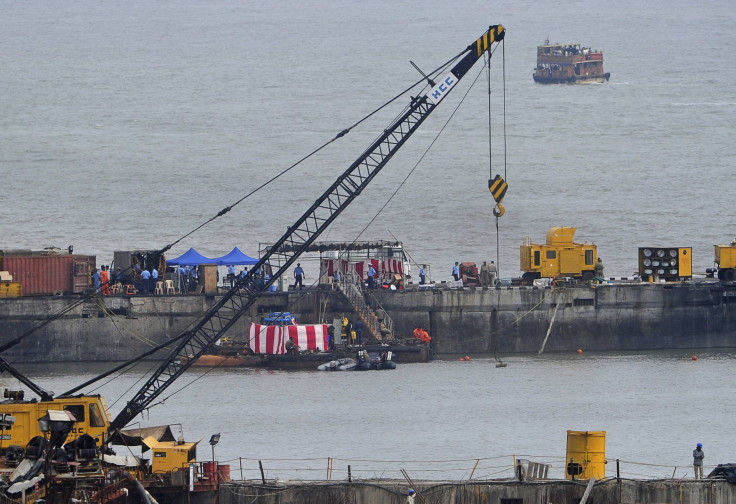Indian Navy Submarine Blast: Russia Attributes Accident To Lax Safety Standards, Will Assist India In Probe

A team of Russian experts will assist India in an investigation into the deadly explosions and fire on Aug. 14 that sunk an Indian navy submarine and killed all 18 sailors on board, the Russian government said on Friday, as the erstwhile superpower seeks to defend its reputation as a key worldwide supplier of military hardware.
Russian Deputy Prime Minister Dmitry Rogozin said Russian experts did not believe technical failure caused the accident aboard the vessel, which was originally built and recently upgraded in Russia, adding that their initial suspicions pointed toward lax technical safety standards, Russia’s RIA Novosti news agency reported. The accident on board the submarine occurred when it was berthed at the vessel’s home port in the western Indian city of Mumbai.
“I have instructed the United Shipbuilding Corporation to send more specialists in agreement with the Indian side, to take part in the investigation of the tragedy and to provide all assistance necessary to our Indian friends,” Rogozin, who oversees the Russian defense industry, was quoted as saying by RIA Novosti.
“The initial information … is that the explosion occurred in the compartment where the batteries were charging," he said. “This is the most dangerous work, which is not so much to do with the makers of these batteries, but with technical safety measures, which must be at the highest level. So the first suspicions of our experts are about questions of technical safety standards. We aren’t blaming the equipment yet,” he added.
The explosion on board INS Sindhurakshak, a diesel-electric submarine, occurred three months after India’s defense ministry spent about $80 million to upgrade the vessel in Russia, and has been called the worst peacetime disaster in the history of the Indian navy.
India’s Chief of Naval Staff Admiral D. K. Joshi, on Thursday, said that the vessel’s batteries were recharged three days before the accident, and that the navy did not suspect that an initial minor explosion in the vessel’s torpedo chamber, which triggered a bigger blast and a fire due to the presence of ammunition, was caused by sparks emitted during routine recharging of batteries.
The navy chief said a team of experts is trying to determine why both manual and automatic alarm systems, which were supposed to alert the crew during emergencies, failed to go off.
Divers, searching for the bodies of the 18 sailors who were on board the vessel at the time of the tragedy, have recovered six bodies so far, Press Trust of India reported, citing naval sources.
A defense official told Indian newspaper DNA that divers found two bodies in the second compartment of the submarine and four from the third, adding that the rescue operation is under way in the fifth and sixth compartments. Chances of recovering more bodies appeared slim, the report said, citing a navy official.
The Indian navy may seek assistance from a Singapore-based company to lift the submarine, which remains submerged in waters near the naval dockyard in Mumbai, DNA reported.
© Copyright IBTimes 2025. All rights reserved.





















